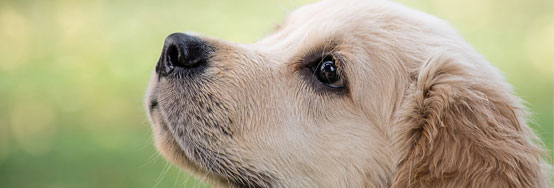Separation Anxiety
How to help your dog with Separation Anxiety
What is Separation Anxiety?
Separation anxiety is the fear of being alone or away from a specific family member. The most classic signs are destruction, house soiling, and excessive vocalizing. Since our dogs cannot talk to us about their emotions, we must gather as much history (and even video) as possible before making the diagnosis. Other problems, such as boredom, house training issues, barrier frustration, and obsessive behavior, can present with similar signs.
Classic Signs:
- Destructive behavior is specifically directed toward exits, such as doors, door frames, or windows.
- Vocalization (yelping, barking) and/or inappropriate urination or defecation.
- Hyper-attachment to you. Your dog lacks independence or confidence (aka “Velcro Dog”).
- Destructive behavior and anxiety only occurs when your pet is alone or anticipates being alone, especially within the first 30 minutes of your leave. This is where setting up a video camera becomes invaluable.
Treatment
Training, or behavior modification, is the primary focus of treatment. Your pet also may also need to be on anti-anxiety medication in order for the training to be successful. It takes time, patience, and consistency to reduce your pet’s behavioral woes.
Hyper-attachment
- Avoid giving your pet too much attention in the wrong situations. All interactions should be initiated by you and only when your dog is calm (e.g. when you come home, ignore your dog until it calms down, only then should you calmly greet your pet.) Avoid protracted “good-byes” before you leave. Do not punish your dog for wanting attention or acting anxious.
- If your dog sleeps in your bed, sits on your feet, or always has to be touching you, you need to discontinue those practices. Provide your dog with its own bed or area where it can see you and train it to lay there instead.
- Reward your dog for relaxing calmly away from you. Interactive treat toys are a useful way to keep your dog engaged without your participation.
- If there are other people in the house, make sure that several people are involved with pet care, especially feeding, so that your dog doesn’t always look to one person.
Positive Alone Time
- Create an environment for your dog to be content and relaxed without you there. If the TV or radio is on most of the time when you are home, keep it on when you leave to provide a comforting familiarity for your dog.
- Provide your dog with something interesting to do, such as a puzzle toy or a Kong filled with something special. Provide these treats only when your dog is alone.
- Try an Adaptil (DAP) infuser or collar or a Thundershirt to induce a feeling of well-being and calm.
Desensitization
- Vary your routine. Many anxious dogs pick up on your behaviors and routines before you leave. These cues can trigger an increase in anxiety. So mix up the steps in your routine to keep your dog from getting worked up. Shower – eat breakfast – get dressed. Eat breakfast – shower – get dressed. Etc.
- Go through your routine in smaller steps. Put on your shoes then take them off. Jingle your keys then put them down. Leave for 1 minute then come back (all before anxious behavior occurs). You may feel silly, but practicing this frequently can be very helpful in reassuring your dog that you will be back and there is no need to panic.
Expected Outcome
Anxiety will most likely persist for the life of your pet. The goal is to reduce the level of anxiety to a more comfortable level for your dog. Relapses are always possible, so always pay attention to the cues that you are giving your pet. Please contact us as soon as a relapse seems to be happening. If you are frustrated with the success that you are having, we can recommend a Veterinary Behaviorist for further guidance.

Contact Us

